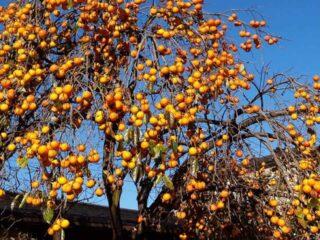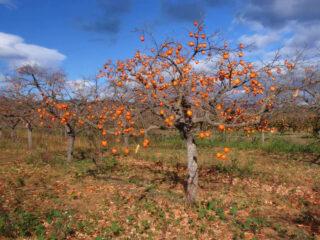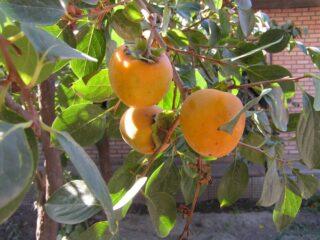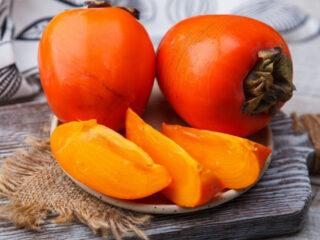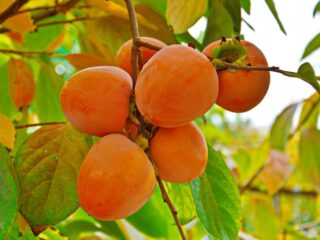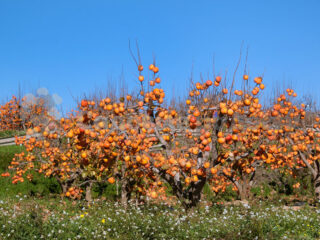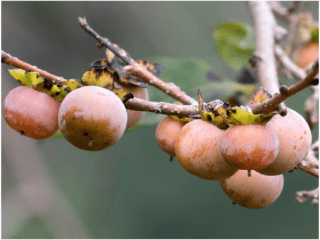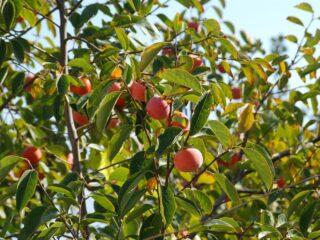Content
Persimmon Prok bred specifically for growing in regions with cold climates. The culture is grafted onto a frost-resistant stock. The variety of American selection is resistant to diseases, unpretentious in care, gives a high yield. It is popular with gardeners for its taste and fruit size. The variety is suitable for growing in large areas for commercial and production purposes.
Description of persimmon variety Prok with photo
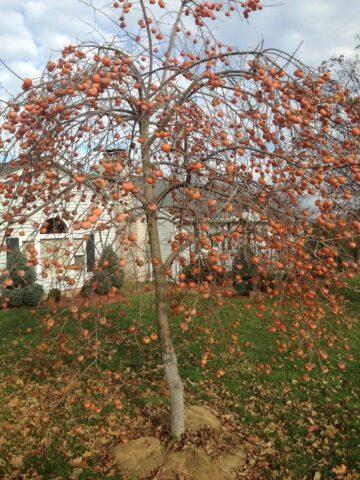
Persimmon Prok grows in the form of a compact tree 2.5–4 m high
Description of culture:
- skeletal branches and central trunk with dark gray bark, intensive shoot formation, young stems with a smooth surface are dark brown, with drooping tops;
- the crown is dense, the leaves are bright green, rounded, alternately located;
- flowers are light yellow, bell-shaped, formed from leaf sinuses, male are collected in brushes, female are solitary;
- cups with five petals.
The fruits of the persimmon Prok are large, bright orange in color. They have the following characteristics:
- rounded shape, slightly elongated at the bottom;
- weight - 100-180 g;
- the peel is thin, uniformly colored, elastic, tolerates transportation well, does not crack;
- the pulp is dense, fibrous, juicy, light orange;
- dessert persimmon variety, sweet taste with a pronounced aroma, fruits are universal in use;
- the seeds are large, dark brown, flat.
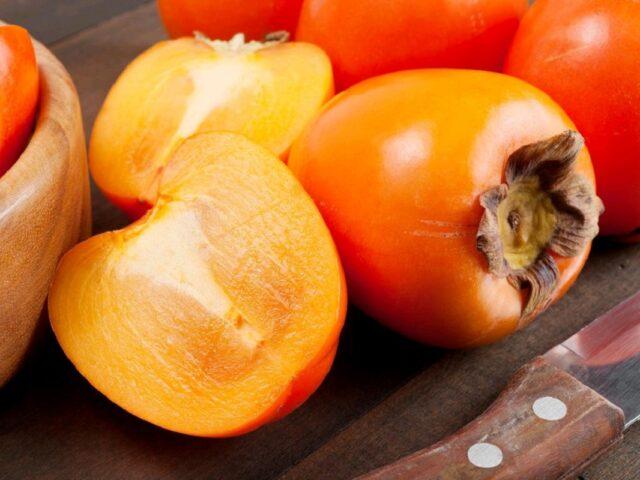
Fruits plucked at the stage of technical ripeness ripen well at room temperature
Characteristics of persimmon Prok
Variety Prok is grafted onto a frost-resistant stock of Virginia persimmon. The culture is recommended for cultivation in the Central, Central and Northern Caucasus. In Russia, the optimal climatic conditions for growing persimmon Prok are in the southern regions; in the Moscow region, it hibernates without damage. If the fruits do not have time to fully ripen to frost, they are removed and sent to ripening.
According to the varietal characteristics, an adult tree of the Prok variety hibernates without damage at a temperature of -25-30 0C, young seedlings require shelter of the root system and crown.
Persimmon Prok is classified as fast-growing, the first crop is harvested in the third year of growth. The tree reaches its optimum yield at 5–6 years of age. Blooms in June, the cycle lasts 10-15 days. Pollination is cross, the plant contains male and female flowers.
Both species give fruit, but only females have seeds if they are pollinated. For persimmon Prok, all dioecious varieties with the same period of fruiting and frost resistance are suitable as a pollinator, for example, Rossiyanka, Meder.
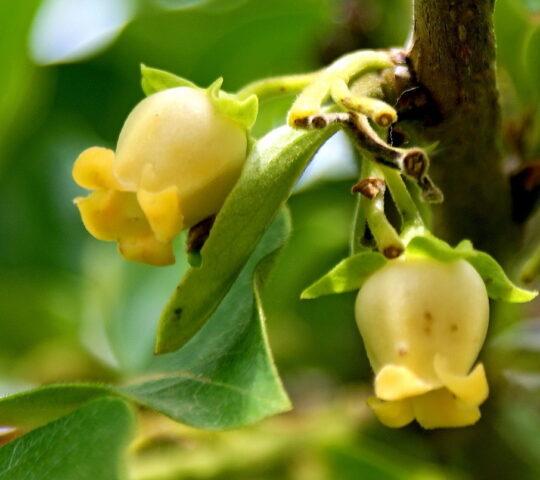
Persimmon Prok is not afraid of returnable spring frosts due to late flowering, inflorescences crumble only with a lack of moisture
Variety Prok at the genetic level has a high immunity to all types of fungal infections. In the cold season, if the persimmon is planted in the shade and exposed to the north wind, gray rot may develop. Fungal infection affects the ovaries and fruits.
To avoid the problem, properly allocate a place for landing. It should be sunny and sheltered from the wind. In the spring, during the formation of buds, for the purpose of prophylaxis, persimmon is treated with "Topsin".
For persimmons of the Prok variety, the scale insect poses a threat. At the first signs of damage, the tree is treated with Karbofos.
Proc is classified as a medium-late variety. The harvest ripens from mid to late October.Fruiting is stable. From a plant that has entered a full reproductive phase, up to 80 kg of berries can be harvested in the southern regions and up to 60 kg in a temperate climate.
Advantages and disadvantages
Persimmon Prok is quite popular with gardeners. It is in the top 5 most bought varieties. It is valued for a number of advantages:
- stable yield;
- unpretentious care;
- pleasant taste, lack of thiamine in the composition;
- frost resistance;
- long shelf life of berries;
- transportability;
- persimmon is suitable for industrial cultivation;
- versatility in application (consumed fresh, dried, prepared desserts, juice);
- high immunity.
There are no downsides to a particular variety. Like all representatives of culture, Prok does not grow in the shadows. Young trees require protection of the root system and crown from frost.
Features of growing persimmon Prok
The Prok variety is propagated by generative and vegetative means. In the first case, purchased seedlings at least two years old are used for planting. If the root system is open, it is treated with an antifungal agent before planting.
A place for persimmon is taken from the southeast side, the site should be open during daylight hours. Prok will grow on any type of soil, but full-fledged vegetation is possible only on light soils with good aeration, enriched with nutrients. The composition is neutral or slightly alkaline.
Generative reproduction is rarely used. It will take two years from planting seeds to placement in open ground.
For a seedling, seeds are taken from well-ripe or overripe fruits, each seed is placed in a separate container with a fertile substrate (sand, compost, turf soil in equal parts).
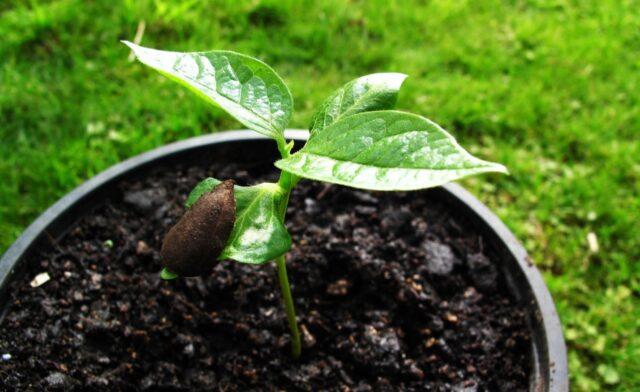
In the southern regions, planting in open ground is carried out in the spring (at the beginning of May) and in the fall (in September)
In temperate climates, the procedure at the end of the season is not practiced, since a fragile seedling does not overwinter.
Planting and leaving
The pit for the persimmon Prok is prepared on the day of the work:
- The planting hole is dug 50-60 cm deep.
- The bottom is closed with drainage.
- Compost, fertile soil layer, sand are mixed in the same proportion, ash and nitrogen-containing fertilizer are added.
- Part of the mixture is poured onto the bottom of the pit, a hill is made.
- Drive in a fixing stake.
- Persimmons are placed on a cone-shaped embankment, covered with the remaining soil mixture, and compacted.
- The hole is filled to the edge, watered, the trunk is tied to a stake.
- The vaccination site is deepened by 10 cm.
After a day, persimmon is mulched. So that the soil does not dry out, and there is no stagnation of water, it is periodically watered. During the planting season, the Prok variety does not require top dressing. The next year, in the spring, nitrogen-containing agents are introduced, during the flowering period they are fertilized with potassium. When the berries are formed, superphosphate is added. In the fall, they are fed with a complex mineral fertilizer without nitrogen. Organics are used in liquid form from spring to early September. The frequency of the procedure is twice a month. In autumn, the layer of mulch is increased and the crown is insulated with any covering material.
Harvesting and storage
Harvest before the first frost. In the Central Lane, this is the end of October or the beginning of November. They are removed from the tree together with a rigid receptacle (by the principle of screwing in a light bulb). The berries are placed in special boxes with insulated cells. Store at a temperature not higher than +5 0C in a well ventilated room. In such conditions, the presentation and nutritional value of persimmon does not lose up to 70 days.
Conclusion
Persimmon Prok is a frost-resistant crop created for growing in areas with cold winters. A variety with a stable yield, dioecious, moisture-loving, full growth is possible only in a sunny area. Persimmon is early-growing, the first harvest gives at the age of three, ripening is medium late. The fruits are sweet, without astringent taste.They are consumed fresh, they make jams, preserves, juice.
Reviews of persimmon Prok
